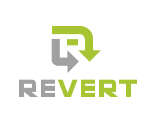Problem:
A US-based global content company required on-site standards-compliant data sanitization for a Cisco Unified Computing System (UCS) solution consisting of multiple servers and network switches. The challenge was to complete the process within a tight two-day deadline.
Challenges:
The cluster included multiple disk drive types, including 240GB SSDs, 3.8TB SSDs, and 1.6TB NVMe SSDs. To ensure proper identification, the serial numbers of the servers and switches were verified. The work was carried out within a cage with the cluster installed across two cabinets that also contained live systems. Revert’s approach and methodology ensured that production systems were secure and isolated from the processing.
Results:
When the initial plan to boot the data sanitization software from the servers proved unfeasible, the Revert technologist demonstrated remarkable adaptability by running all the drives offline, simultaneously and in parallel, including the U.2 NVMe drives. The network switches were erased and reset to factory default settings using the manufacturer’s terminal commands.
By leveraging industry-leading software and following Revert’s established processes, the entire project was not just completed within the two-day deadline, but in fact, finished in just one day. This efficiency enabled the customer to finish their IT asset decommissioning activities ahead of schedule.
